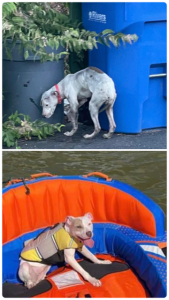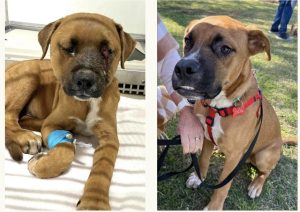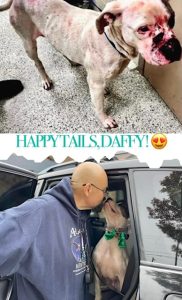Worthy Convos: Giving Hope
For those of us with pets running around the house, we often forget they aren’t human. After all, there’s a lot of similarities between caring for a child and caring for an animal. We take them to the vet for routine checkups, feed them multiple times a day, wonder what they’re thinking, and even brush their teeth from time to time. It’s hard to imagine our lives without them. What’s even harder to imagine is that this is not the reality for so many animals. There are abused and neglected animals right here in our community, and this is why Saving Hope Animal Rescue exists. This foster-based rescue organization works tirelessly to educate and advocate so that every animal has a chance at a life of love and kindness. I recently spoke with Lauren Anton, the executive director of Saving Hope.

What is the mission of Saving Hope?
The mission of Saving Hope Animal Rescue is to rescue, provide shelter, medical care, and affection to abandoned and abused animals across the state of Texas and beyond, with the goal of adopting each animal into a loving home. In addition, we promote animal welfare through education, partnerships, and a community outreach program. Alongside the Saving Hope Foundation, we promote and believe in spaying and neutering all pets.

Photos courtesy of Saving Hope
What is your rescue and adoption process?
Each rescue mission varies, but the majority are rescued from the shelter and, depending on the medical need, either go to the foster home or directly to the vet. The foster will keep the animal in their care as if it was their own, providing love, care, and attention to keep the animal safe. If heartworm positive, we treat for heartworms before the animal is eligible for adoption. If the dog has a broken leg, we pay and oversee until healed from surgery [before] any adoption can be finalized. There are many fosters that have the intention to adopt but we wait until medically cleared to finalize. We want every animal in our care happy as well as every adopter.
Do you work with vets and vet techs?
We work with many vets and vet techs in the community. Our veterinary bills exceeded $1.2 million in 2022. We are hoping once the Aledo facility is opened, we will cut our vet bills in half, which will allow us to save more animals in need.
What are some fostering commitments to be aware of?
Choosing to foster is one of the most rewarding experiences. Before fostering, the foster needs to be aware of the [animal’s] needs which vary. Age, breed, sex, personality, and energy level all play a role in what the animal’s needs are. For example, if someone works 8 hours per day, we suggest an adult with low energy or a senior dog.
What have you learned working with animals?
Working with animals and in the nonprofit arena has been one of the most mentally and sometimes physically exhausting experiences but also by far the most rewarding. Even when transporting a dog from the shelter to a foster, you can see the light come back into the animal’s face. The saved animal stands a little taller and breathes a little easier. Volunteers can feel and see the difference in less than an hour. Many volunteer experiences can take hours, months, or even years to feel a reward, and many volunteer knowing it is helping but it is not easily seen.

Photos courtesy of Saving Hope
Saving Hope was recently awarded grant funding from the North Texas Community Foundation. What area(s) of your organization will benefit the most?
Medical by far is one of our greatest needs but also transport costs can be high. We adopt out of state to adopters that have been preapproved in Oregon, Minnesota, and Washington. We are also opening an adoption facility, Saving Hope Rescue Ranch and Sanctuary, which will include adoption areas; mom and puppy pods, where new mothers can decompress with their babies; a senior sanctuary, as well as a medical and intake facility. This will not only bring more awareness to the community and [education] but also provide a safe and happy place for all to visit, volunteer, adopt or foster.
If I come across a stray animal, what do I do?
If the stray is in Fort Worth, the best way to proceed is to take the animal to be scanned at a local vet or to the city shelter located at 4900 Martin Street and ask for the animal to go through offsite impound. This allows the animal to be registered as found and they fully vaccinate, provide a heartworm test as well as microchip them. IF it is an offsite animal, you do NOT drop the dog there but hopefully can keep somewhere safe or call a local rescue to help. Once 96 hours have passed, that dog can legally be transferred whether to an individual or rescue. The shelters are all beyond capacity, and so many animals are either euthanized or get sick. We are trying to keep the animals safe and healthy by not dropping them off.

Photos courtesy of Saving Hope
Tell us your favorite adoption story.
Daffy was just another roaming pittie starving and looking for food. She found some chickens and, as a result, the property owner beat her very badly. After spending some time Wild at Heart Canine Academy, Daffy was adopted. Training can be so important in helping dogs gain confidence after going through traumatic events. Stories like Daffy’s give us HOPE for so many others that are waiting for their happily ever after. Thank you to the Kris Kelly Foundation for bringing our awareness to Daffy’s story.


 Sign in
Sign in

